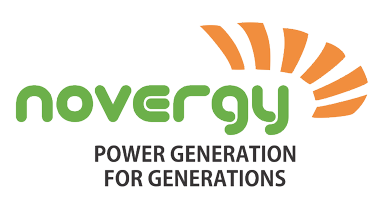The growing concern regarding the scarcity of resources and detrimental environmental effects of conventional construction practices gave birth to the green building concept. Even though there are numerous theories of green buildings, the fundamental principles coincided in the layout, structure, construction and maintenance of buildings, taking the following into consideration:
- Water consumption
- Power usage
- Choice of materials
- Quality of indoor environment and
- Effects of the construction on its immediate surroundings
Green buildings integrate a range of methods and practices aimed at reducing and ultimately eradicating the environmental impact of buildings. The convention focuses on the use of both active and passive solar energy as renewable resources. They are also centered on the environmental-friendly rooftops that store water with small trees, crops and vertical gardening.
The sustainable building industry is magnificently expanding, and unsurprisingly photovoltaics plays a critical role in its popularity. Global indicators are shifting from fossil fuels to the usage of renewable sources of energy for all industrial sectors. They are becoming extremely advantageous in workspaces, houses, industrial and commercial sites as there is a massive demand for carbon-neutral and self-reliant buildings.
Photovoltaics give infrastructure the capacity to produce their own sustainable power, hence green construction incorporates them into the site’s structure. Furthermore, photovoltaic systems are utilized to drive green buildings, which make them absolutely green in all phases.
The sun is an inexhaustible form of energy that could be utilized for power generation worldwide. Green construction capitalizes it by using solar panels and renewable energy as and when possible. Passive solar energy depends heavily on sunlight and the orientation of the site to deliver heat energy without any other technologies. It includes windows, glass walls, ceilings and more. Rightly positioned window frames drive daylight in and thermal mass like brick, gypsum, adobe, or water – it preserves the heat and steadily releases it during the night.
An active solar-powered process transforms solar heat into usable electricity, whether it is located on the rooftop of the building or mounted on the ground. These panels make your infrastructure energy-independent by proffering clean power sources.
BIPV – its applications and its benefits
BIPV offers scope for on-site energy generation for buildings that have space-constraints by replacing the traditional construction materials facades, windows, glazing and cladding. This is why BIPV is witnessing enormous growth in urban micro-energy production.
BIPVs are the best of both worlds – they are aesthetically appealing while generating electricity for your facility. They come in a myriad of transparency variants from fully opaque to 50% opaque with multiple color options. They are multi-functional and help buildings with thermal insulation, noise protection, illumination, water and sun proofing.
Deployment of BIPV can be done during the construction stage of a building or in the case of renovation of the existing building where the envelope materials have to be restored. By and large, there are three main applications of BIPV – roofs, facades and externally integrated systems.

On the roofs, they can be installed in the form of shingles, tiles and skylights. On facades, they can be positioned as the cladding, curtain walls and windows. In a similar way in externally integrated systems, they can be used as railings and shading components.
Benefits of BIPV
Not only does BIPV generate renewable electricity onsite without needing extra property, but it could also influence the energy utilization of a building through the use of daytime light and a significant decrease in cooling loads. BIPV can thus support the growth of Net-zero energy constructions. BIPV has been the only construction material that translates roofs and facades into energy production sources. They have a fascinating return on investment.

In addition, the broad application of BIPV systems offers architects and construction designers a variety of ways to escalate the visual aesthetic of buildings. Last but not least, the owners of the aforementioned buildings also benefit from slashed electricity overheads and the positive perception that the building is recognized as an “eco-friendly” and unconventional concept.
With that, BIPV also delivers structural strength to the buildings by safeguarding them from harsh weather conditions by providing wind load and ageing resistance. They come in two variants – crystalline cells and thin film. BIPV also aids in retrofitting the existing houses and buildings into green buildings. This way, you can contribute in reducing the carbon footprint and curtail the impact of climate change.
Way forward with Novergy BIPV solutions
With engineers, building project managers, architects and designers, Novergy’s BIPV solar panel is a desirable choice to construct green and sustainable structures without jeopardizing architectural concepts. The result is a remarkable but eco – friendly assimilation of photovoltaic solutions into the building layout.

Novergy, with its BIPV panels, aims to make certain that all buildings can obtain elegance and solar power harvest together. The BIPV systems further facilitate in obtaining the certification of green buildings like GRIHA or LEED. These panels also aid in reducing the excessive solar intake in the building and therefore keep the structure cooler and hence decrease the energy consumption of the air conditioners.
We offer three kinds of BIPV panels available in a variety of colors, transparency, dimensions, thickness and shapes to meet any project requirement.
- Double glass PV series
- See through PV glass series
- PV colorshine (opaque) series

Our solar BIPV panels are highly-efficient that generate more energy per sq. meter and also exceedingly good results in low light. In addition to producing power, our solar BIPV panel is also recognized for its reduced heat consumption.
Till date, more and more large companies & builders are realizing the benefits of clean energy and incorporating BIPV into their infrastructures from construction to the completion phase. Make your building sustainable and energy-efficient with Novergy today, contact us now!

